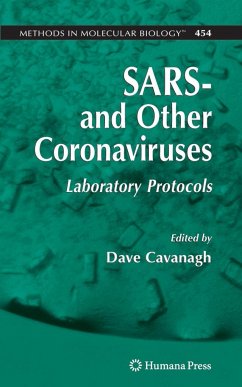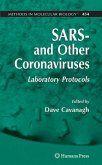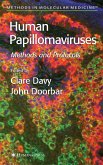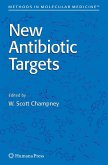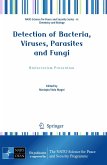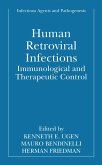In 2003, the word "coronavirus" spread across the globe, somewhat further than the virus that sparked the panic. In SARS- and Other Coronaviruses: Laboratory Protocols, expert researchers examine these devastating viruses through detailed laboratory protocols. Chapters deal with such subjects as detection and discovery of coronaviruses by nucleic acid and antibody-based approaches, virus isolation, propagation and titration, virus purification, structure analysis by electron cryomicroscopy, expression and crystallization of viral proteins, raising antibodies against viral proteins, manipulation of the coronavirus genome, and descriptions of how to investigate aspects of the cell surface for coronavirus receptors.
Comprehensive and cutting-edge, SARS- and Other Coronaviruses Laboratory Protocols serves as an ideal guide for all virologists and especially for those working with coronaviruses.
Comprehensive and cutting-edge, SARS- and Other Coronaviruses Laboratory Protocols serves as an ideal guide for all virologists and especially for those working with coronaviruses.
From the reviews:
"The serious nature of coronaviruses became well known with the discovery of the severe acute respiratory syndrome (SARS) virus which spread rapidly with life-threatening consequences in humans. ... this book describes the laboratory techniques used to study them. ... Scientists and students working in virology laboratories and, specifically, laboratories working with coronaviruses are the intended audience. ... each chapter contains a copious amount of detailed information as well as specific notes with technical advice. This is a valuable resource for scientists working with coronaviruses." (Rebecca T. Horvat, Doody's Review Service, November, 2008)
"This is volume 454 in the series Methods in Molecular Biology. ... if you work on coronaviruses, or want to enter the field, this is a must-have book at an affordable price." (Stuart Siddell, Microbiology Today, February, 2009)
"The serious nature of coronaviruses became well known with the discovery of the severe acute respiratory syndrome (SARS) virus which spread rapidly with life-threatening consequences in humans. ... this book describes the laboratory techniques used to study them. ... Scientists and students working in virology laboratories and, specifically, laboratories working with coronaviruses are the intended audience. ... each chapter contains a copious amount of detailed information as well as specific notes with technical advice. This is a valuable resource for scientists working with coronaviruses." (Rebecca T. Horvat, Doody's Review Service, November, 2008)
"This is volume 454 in the series Methods in Molecular Biology. ... if you work on coronaviruses, or want to enter the field, this is a must-have book at an affordable price." (Stuart Siddell, Microbiology Today, February, 2009)

